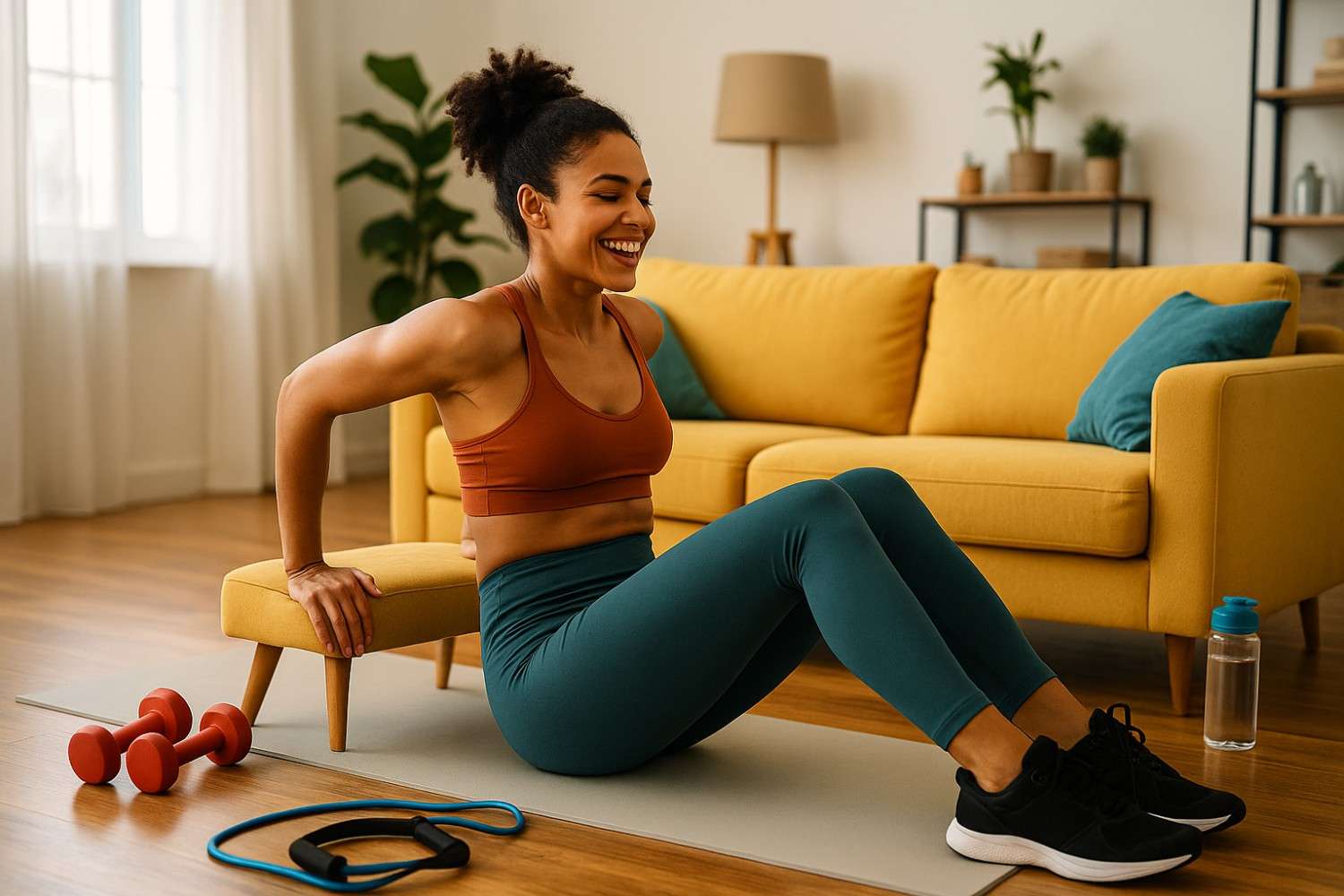Home fitness has become a viral phenomenon, making it easier than ever to get strong, flexible, and energized without stepping foot in a gym. With creative routines and clever hacks, your living room can transform into a personal fitness studio. These trending ideas offer fresh ways to stay fit, boost your mood, and reach your goals—no expensive equipment or memberships required.
1. Furniture-Assisted Workouts
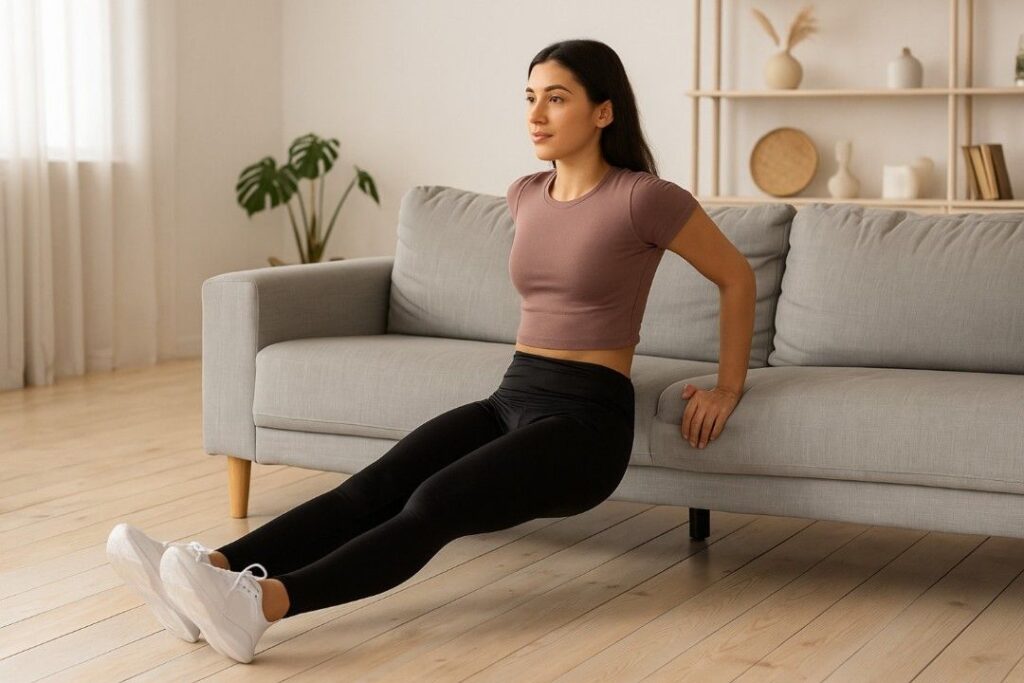
Turn ordinary household items into effective exercise tools. A sturdy chair can be used for tricep dips, incline push-ups, or Bulgarian split squats, challenging your upper and lower body with just one prop. The edge of a couch doubles as a spot for step-ups or modified burpees, while coffee tables are perfect for mountain climbers or box jumps (if stable and safe).
Even heavy books or water jugs substitute as makeshift dumbbells for bicep curls or shoulder presses. By creatively repurposing furniture, you maximize every square foot and avoid spending on extra equipment. This hack is perfect for small spaces or renters who can’t install bulky gear. Always check the stability of your chosen items to avoid injury, and rotate exercises regularly to keep workouts exciting and effective.
2. Bodyweight HIIT Circuits
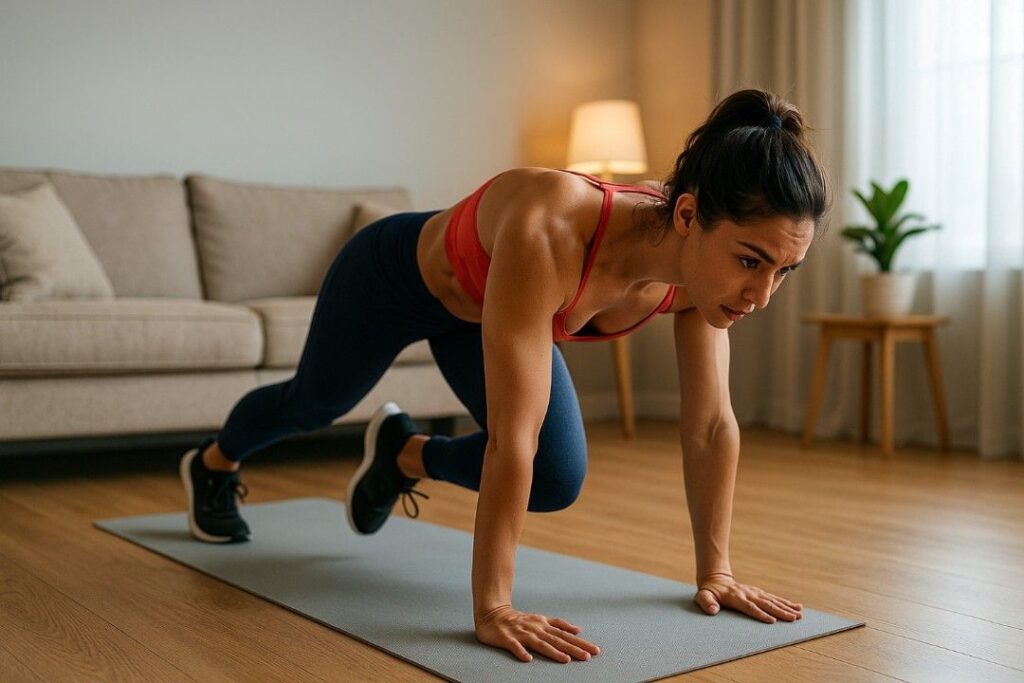
High-Intensity Interval Training (HIIT) using just your body weight is one of the most effective fitness trends for living rooms. These short, intense workouts alternate between bursts of all-out effort and brief rest periods, torching calories while building endurance and muscle. Popular circuits include moves like jump squats, plank jacks, mountain climbers, and burpees.
The best part: you can tailor routines to your fitness level by adjusting the intervals or choosing lower-impact versions. With no need for equipment, HIIT circuits are easy to start and modify as you progress. Set a timer for 20 or 30 seconds of work followed by 10 seconds of rest, rotating through 5-7 exercises. Just 15-20 minutes can deliver a full-body challenge and serious results, making it ideal for busy schedules.
3. Dance Cardio Parties
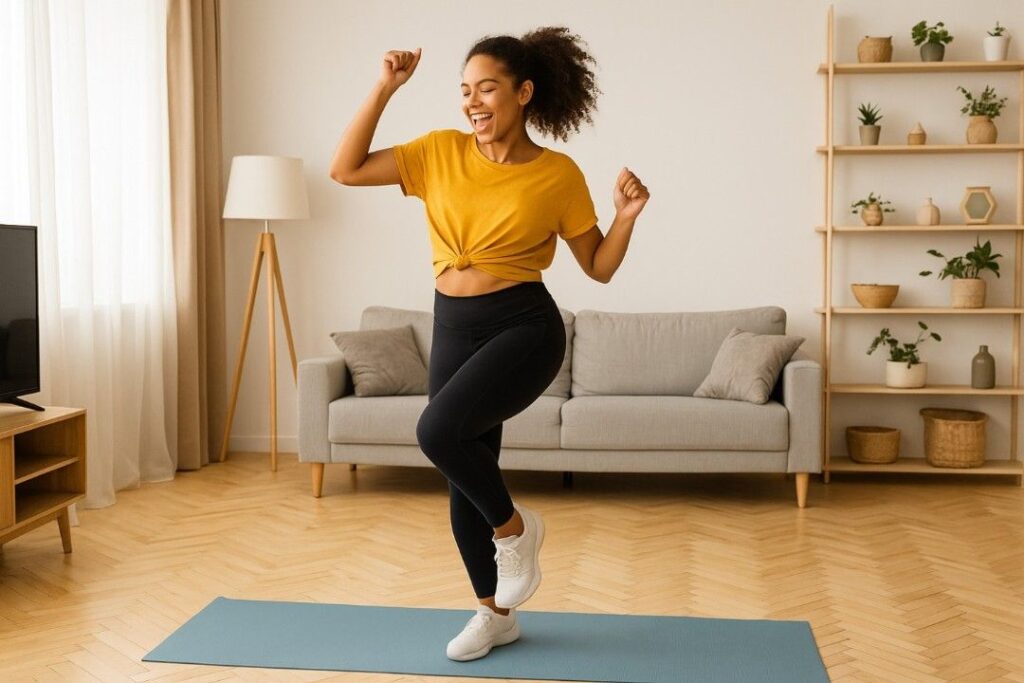
Dance workouts have exploded online thanks to viral TikTok challenges and YouTube tutorials. Dance cardio offers a fun, stress-relieving way to boost your heart rate and improve coordination. Whether it’s hip-hop, Zumba, K-pop routines, or even retro aerobics, these sessions require no prior experience or fancy setup. Turn your living room into a dance floor, follow along with your favorite instructors, or freestyle to your own playlist.
Not only does dance burn calories and build endurance, but it also sharpens memory and motor skills as you learn new moves. Try incorporating intervals—alternate between high-energy songs and slower stretches for a balanced workout. Invite family or roommates to join for extra motivation and laughter, turning exercise into a social, feel-good event.
4. Streaming Fitness Classes
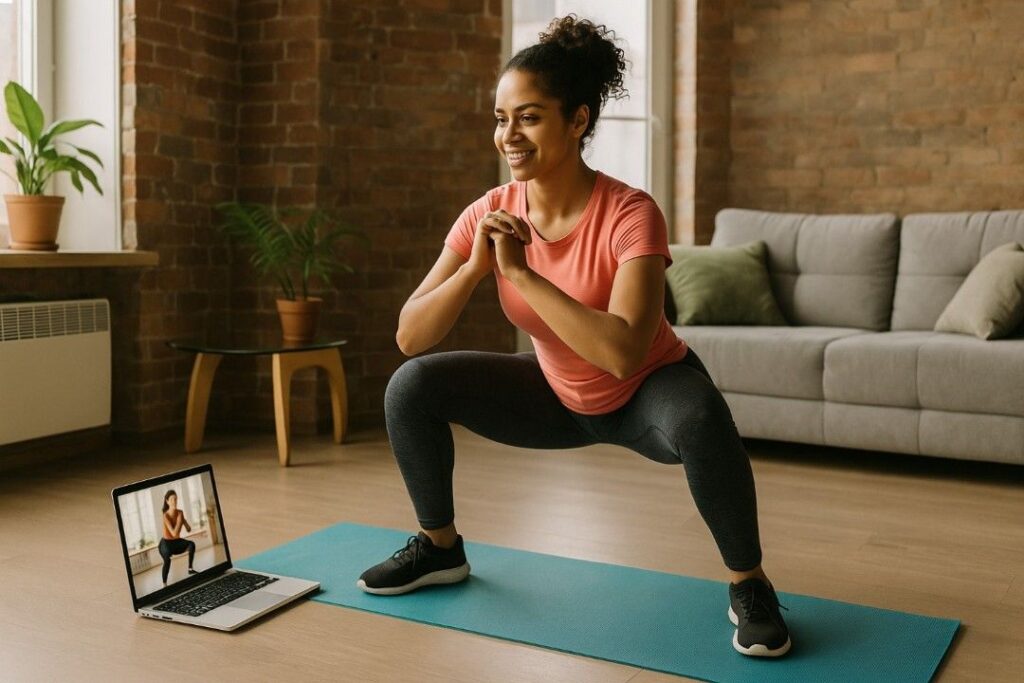
Live and on-demand fitness classes make it simple to access world-class instruction from home. From yoga flows and Pilates mat work to boot camps and kickboxing, streaming services offer endless variety for every interest and ability. Many platforms, such as YouTube, Instagram Live, or specialized fitness apps, provide free or affordable options. Guided classes keep you accountable and ensure you’re using proper form, reducing the risk of injury.
You can mix and match styles each week to avoid workout ruts. Look for programs that require minimal equipment or suggest household alternatives. The sense of community—even virtually—boosts motivation, while expert trainers offer professional guidance. Bookmark your favorites or try new instructors to keep things fresh and inspiring.
5. Resistance Band Routines
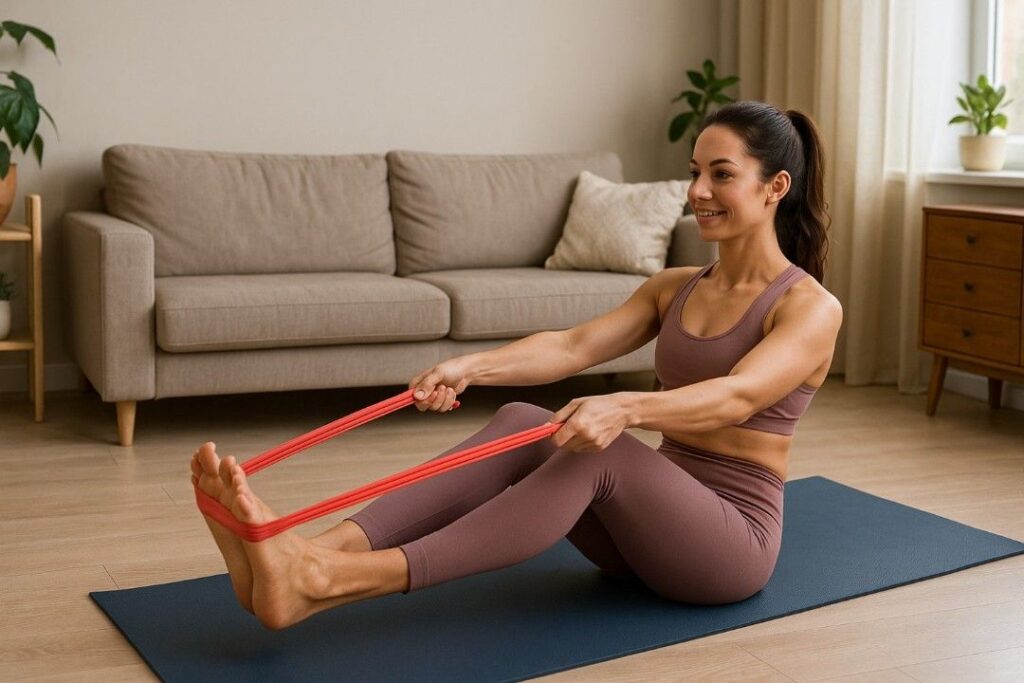
Resistance bands are one of the most versatile and affordable home workout tools. Lightweight and easy to store, bands can be used for strength training, stretching, and injury prevention—all without taking up space. Exercises like banded squats, glute bridges, rows, and chest presses add targeted resistance, helping to tone and sculpt muscles. Unlike free weights, bands provide constant tension throughout the movement, challenging stabilizing muscles and enhancing functional strength.
You can easily adjust the intensity by changing the band’s thickness or grip. Use door anchors or furniture legs to create new angles for pulling and pressing motions. Resistance band routines are also joint-friendly, making them suitable for all fitness levels, including beginners and those recovering from injuries.
6. Tabata-Style Timers
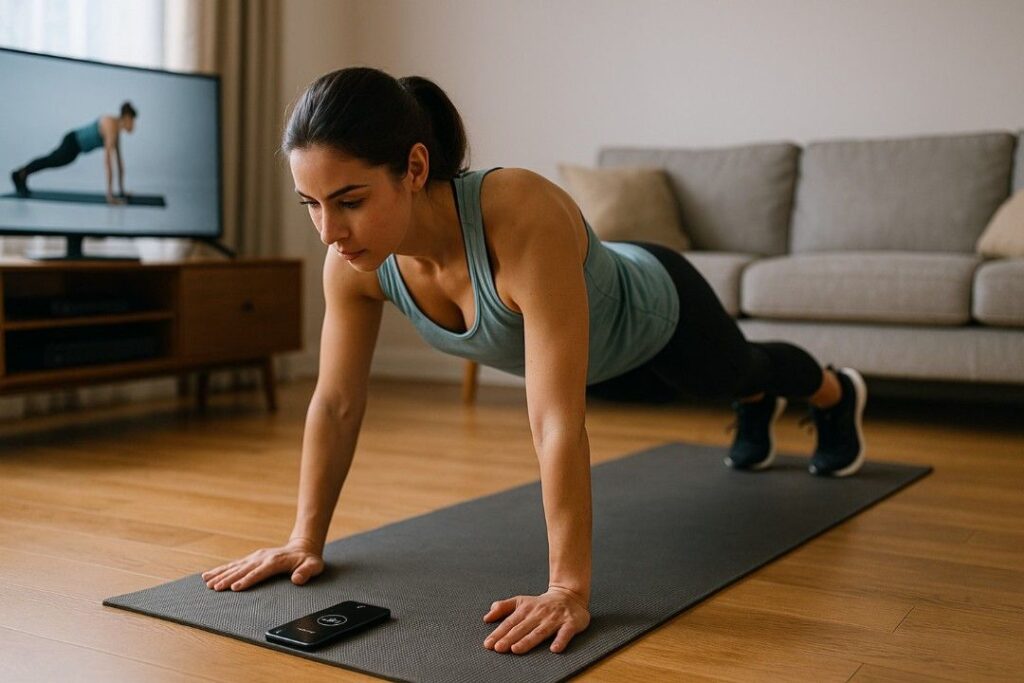
Tabata is a type of HIIT workout featuring 20 seconds of all-out effort followed by 10 seconds of rest, repeated for 4 minutes. This structure, popularized in viral fitness circles, delivers an intense, effective workout in minimal time. Tabata can be applied to any exercise—think squats, push-ups, jumping jacks, or sprints in place.
Use a timer app or online video to guide you through rounds and keep you honest about rest intervals. Tabata sessions are perfect for breaking up the day or adding variety to longer routines. They’re especially useful in small spaces because exercises require little to no movement around the room. Plus, the sense of urgency encourages maximum effort, leading to big results with minimal equipment.
7. Wall Workouts
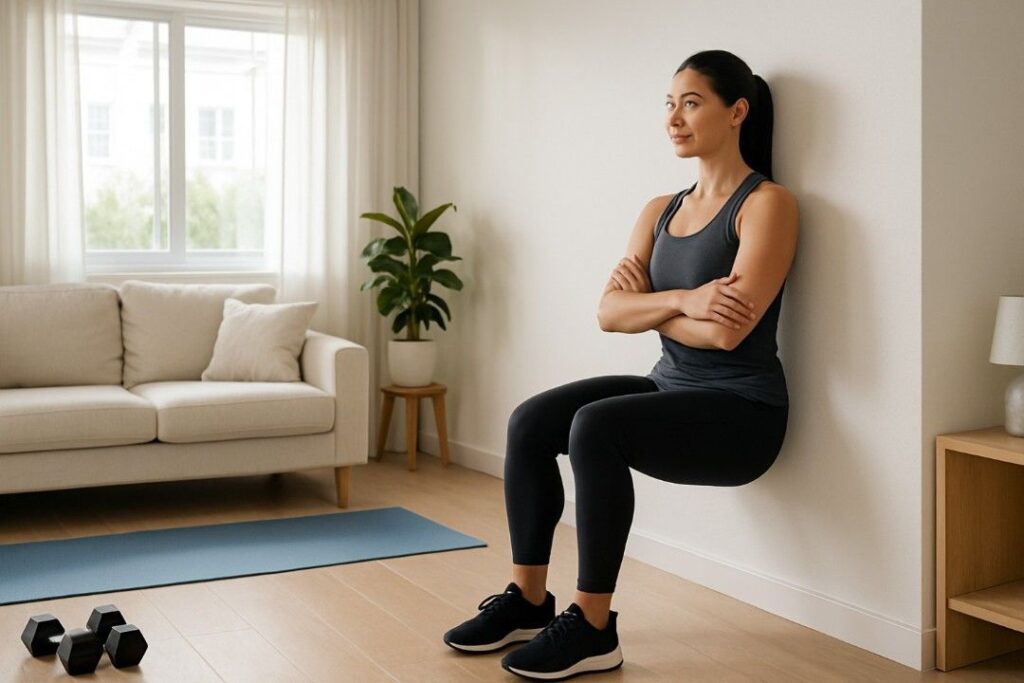
The walls of your living room are more than just decoration—they’re perfect props for creative workouts. Wall sits are a classic isometric exercise for building lower body endurance; simply slide down into a “seated” position and hold. You can use the wall for incline push-ups, handstand practice, or stretching tight muscles like calves and chest.
Wall-supported leg lifts and side planks add a stability challenge, engaging core muscles. For an added twist, try wall walks—starting in a plank and “walking” your feet up the wall to a supported handstand. These exercises require little space and are easy to scale for beginners or advanced fitness fans. Just make sure your wall is clean and clear of artwork before you get started.
8. Creative Cardio Intervals
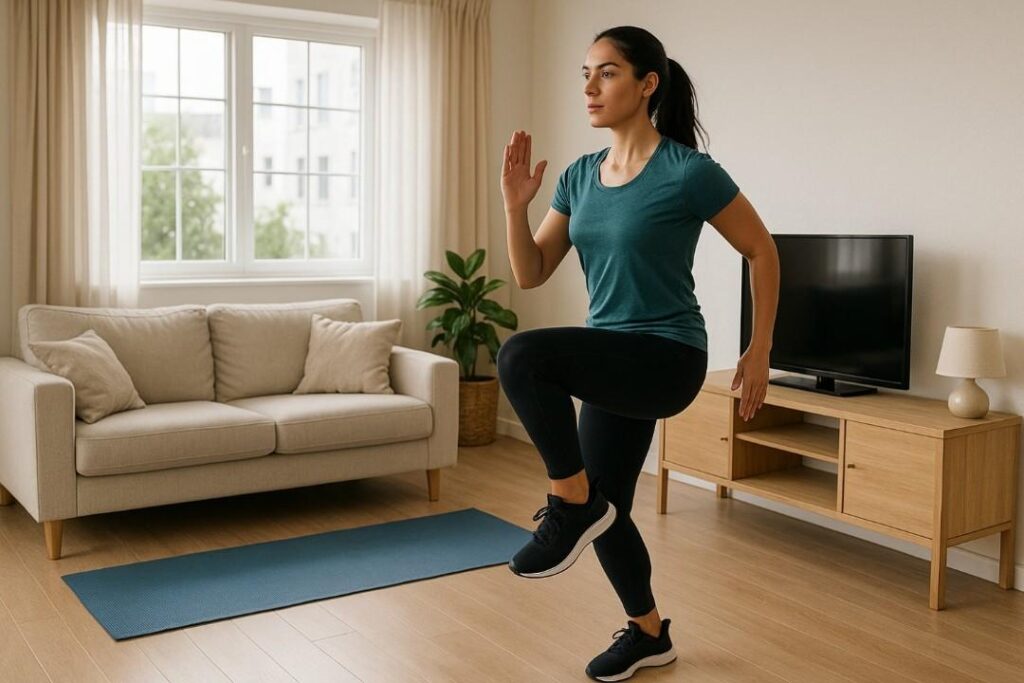
Cardio isn’t limited to running outdoors or using expensive machines. Living room-friendly alternatives like skipping (with or without a rope), high knees, shadowboxing, or even stair climbing (if you have stairs) can get your heart pumping. Mix cardio bursts between strength sets, or create circuits that rotate between exercises for a full-body challenge.
For extra fun, try following online jump rope routines or invent your own dance-inspired cardio sequences. Cardio intervals not only burn calories but also improve heart health and stamina. You can make things competitive by tracking reps or seeing how many intervals you can complete in a set time. This variety ensures your workout stays engaging and delivers all the benefits of traditional cardio.
9. Gamified Fitness Apps
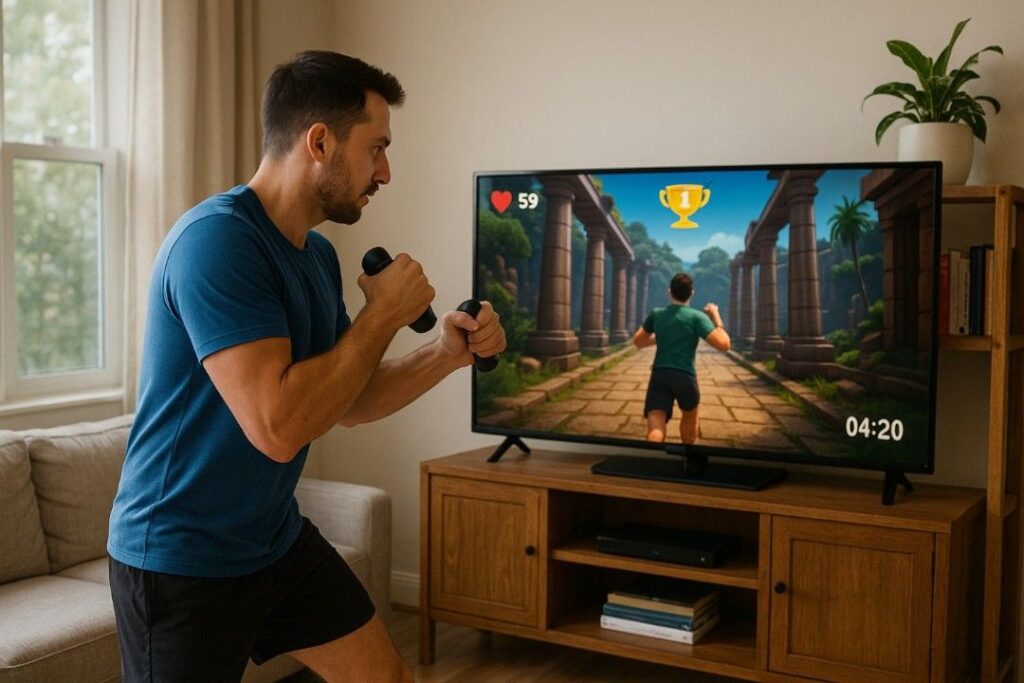
Technology has made home workouts more engaging than ever. Gamified fitness apps turn exercise into an interactive experience, motivating users with points, achievements, or virtual adventures. Apps like Zwift, Just Dance, or Supernatural (for VR users) combine real movement with digital feedback, making workouts feel like play. Some platforms offer leaderboards, social challenges, or rewards for consistency, tapping into the competitive spirit.
Even traditional apps may include badges or progress tracking to encourage regular participation. These tools help make fitness less of a chore and more of a daily highlight. Many options are free or affordable and require minimal setup. Try a few different apps to find the one that matches your goals and keeps you coming back for more.
10. Mind-Body Recovery Routines
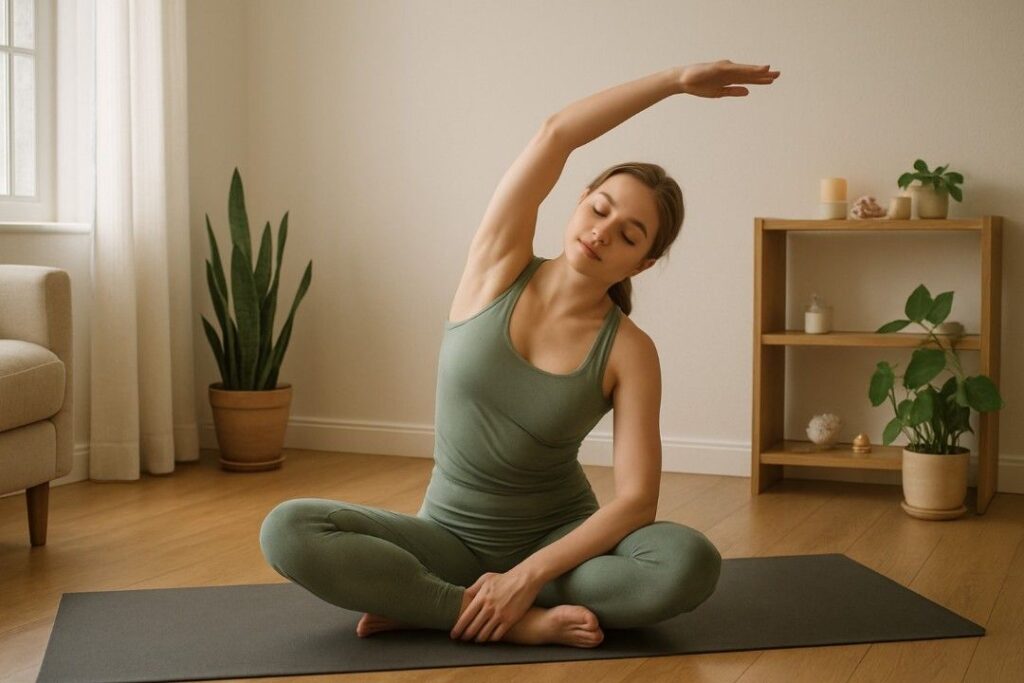
Balancing intense workouts with recovery is essential for overall fitness. Mind-body practices like yoga, Pilates, and guided stretching not only enhance flexibility but also reduce stress and improve posture. Online platforms offer a wealth of short routines suitable for small spaces, focusing on breathwork, gentle movement, or meditation.
Foam rollers, massage balls, or even a rolled-up towel can aid in myofascial release and muscle recovery after tough sessions. Integrating these restorative practices helps prevent burnout, supports long-term progress, and boosts overall well-being. Make recovery a regular part of your routine—whether it’s a calming yoga flow before bed or a quick stretch break between meetings—to keep your mind and body in sync.

